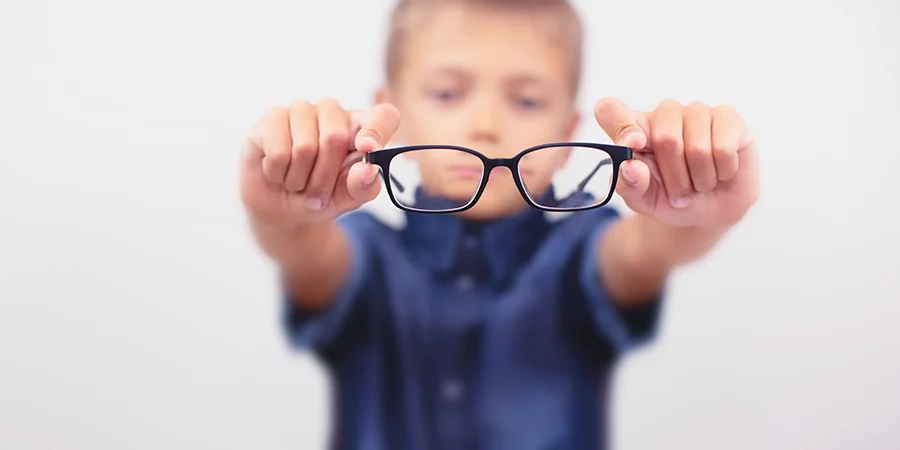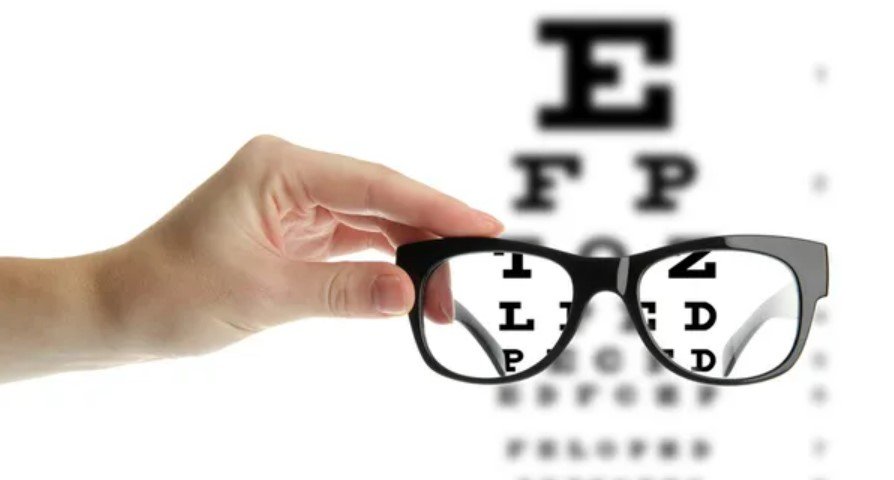Myopia (Nearsightedness): Symptoms, Progression, and Treatments
What is Myopia ?
Myopia, also known as nearsightedness, is a common refractive error of the eye where distant objects appear blurry while nearby objects can be seen clearly. It occurs when the eyeball is too long, or the cornea (the clear front part of the eye) is too steep, which causes light rays entering the eye to focus in front of the retina instead of directly on it. As a result, the images of distant objects are not sharply focused on the retina, leading to blurred vision.
People with myopia can often see objects up close without difficulty, but as the distance from the eye increases, the clarity of vision decreases. Myopia can vary in severity, with some individuals having mild myopia and others experiencing more significant levels of nearsightedness.
Myopia is a common vision problem that affects a large number of people worldwide, and its prevalence has been increasing in recent years, particularly in urban areas with high levels of near work and limited outdoor activities. It can start in childhood or adolescence and may progress over time.
What causes myopia
Myopia, or nearsightedness, is a complex eye condition influenced by both genetic and environmental factors. The exact cause of myopia is not fully understood, but several factors contribute to its development. The primary factors include:
- Genetics: Heredity plays a significant role in the development of myopia. If one or both parents have myopia, there is a higher likelihood that their children will also develop myopia. The risk increases if both parents are nearsighted. Specific genes related to eye growth and refractive errors are believed to be involved in the inheritance of myopia.
- Eyeball Shape: Myopia occurs when the eyeball is too long or the cornea is too steep, causing light entering the eye to focus in front of the retina instead of directly on it. This elongated shape of the eyeball disrupts the normal focusing process, leading to blurred distance vision.
- Near Work and Screen Time: Engaging in prolonged close-up activities such as reading, writing, using digital devices, or working on a computer for extended periods may contribute to myopia progression, especially in children and teenagers. The exact mechanism is not fully understood, but it is believed to be related to the stress placed on the eyes during near work.
- Lack of Outdoor Exposure: Some studies suggest that spending more time outdoors, especially during childhood, may have a protective effect against myopia development and progression. The reasons for this association are still being studied, but factors like increased exposure to natural light and physical activity may play a role.
- Age and Hormones: Myopia often begins to develop during childhood or adolescence when the eyes are still growing and developing. Hormonal changes during puberty may also influence eye growth and can affect the progression of myopia.
- Ethnicity and Environmental Factors: Myopia tends to vary in prevalence among different ethnic groups and is more common in urban areas with higher levels of education and limited outdoor activities. Environmental factors such as urbanization, reduced time spent outdoors, and increased screen time may contribute to the increasing prevalence of myopia.

Myopia symptoms
The symptoms of myopia can vary depending on the degree of nearsightedness and other individual factors. Here are the common symptoms associated with myopia:
- Blurred Vision for Distant Objects is the most characteristic symptom of myopia, causing difficulty in seeing objects in the distance. Such objects may appear fuzzy or unclear, making it challenging to read signs, watch TV, or recognize people from a distance. On the other hand, individuals with myopia often experience Clear Vision for Near Objects, with the ability to see nearby objects clearly. Reading, writing, and other close-up tasks are typically not affected.
- To see distant objects more clearly, individuals with myopia may unconsciously squint their eyes or strain their eyes to focus better.
- Prolonged focusing on nearby objects or straining to see distant objects can lead to eye strain and discomfort. This may result in frequent headaches, especially after extended periods of visual concentration.
- Myopic individuals might experience fatigue or tiredness while engaging in visual activities that require clear distance vision, such as driving or watching sports.
- Children with myopia may hold books, tablets, or other objects closer to their faces to see more clearly.
- Individuals with myopia may tend to sit closer to the television or computer screen to improve their vision.
- Myopia can sometimes lead to reduced visual clarity in low-light conditions or at night.
Myopia diagnosis code
In medical coding, the diagnosis code for myopia is typically assigned using the International Classification of Diseases, Tenth Revision (ICD-10). The ICD-10 code for myopia is:
H52.1
It falls under the broader category of “Other disorders of refraction and accommodation” (H50-H59). The specific code H52.1 refers to “Myopia.”
Medical coders use this alphanumeric code when documenting and billing for medical services related to the diagnosis and treatment of myopia. It helps healthcare providers, insurance companies, and other stakeholders in the healthcare system to categorize and track various medical conditions accurately. When visiting an eye care professional or seeking medical treatment for myopia, the diagnosis code H52.1 may be used in your medical records and insurance claims.
Types of Myopia
There are different classifications of myopia based on the severity and progression of the condition. These include:
- Low Myopia: Refractive error up to -3.00 diopters (D).
- Moderate Myopia: Refractive error between -3.00 D and -6.00 D.
- High Myopia: Refractive error greater than -6.00 D.

Myopia Treatments
The treatment of myopia, also known as nearsightedness, aims to improve distance vision and correct the refractive error in the eyes. There are several effective treatment options available, and the choice of treatment depends on the individual’s age, degree of myopia, lifestyle, and personal preferences. Here are the common methods used for the treatment of myopia:
Myopia eyeglasses
Prescription eyeglasses are the most common and straightforward way to correct myopia. Concave lenses are used in eyeglasses to help focus light directly on the retina, improving distance vision. Eyeglasses provide a clear view of distant objects and are easy to use and maintain.
Contact Lenses
Contact lenses offer an alternative to eyeglasses for correcting myopia. They work similarly by refracting light to focus directly on the retina. Contact lenses are available in various types, including soft lenses and rigid gas permeable (RGP) lenses. They provide better peripheral vision than eyeglasses and are popular among those seeking a more natural appearance.
Orthokeratology (Ortho-K)
Orthokeratology is a non-surgical approach that involves using specially designed rigid contact lenses worn overnight to temporarily reshape the cornea. The cornea retains its new shape during the day, providing clear vision without the need for glasses or lenses. This method is mainly used to slow down myopia progression, especially in children.
Atropine Eye Drops
Low-concentration atropine eye drops have been shown to slow down myopia progression in some children. These eye drops are used under the guidance of an eye care professional to control myopia development.
Multifocal Contact Lenses and Glasses
Some studies suggest that using multifocal lenses may help slow down myopia progression in certain cases.
Myopia Surgery
If you’re 18 or older and your eyes are suitable, you might think about having myopia surgery to get rid of your heavy glasses. Myopia surgery is a special way to help with nearsightedness, making your vision clearer without needing glasses or contacts. It works by changing the shape of the front part of your eyes. This surgery, like LASIK or PRK, is safe and effective, giving you a lasting improvement in your vision.
Which eye diseases can myopia lead to?
Myopia (nearsightedness) can increase the risk of several eye conditions and diseases, particularly when it is moderate to high in degree or when it progresses over time. Here are some of the eye conditions that myopia can potentially contribute to:
- Myopic Maculopathy: This condition occurs when the central part of the retina, known as the macula, deteriorates due to elongation and stretching of the eyeball in high myopia. Myopic maculopathy can lead to central vision loss and impairment.
- Retinal Detachment: Myopia increases the risk of retinal detachment, where the retina pulls away from its normal position. This condition can lead to vision loss and requires prompt medical attention.
- Glaucoma: People with myopia, especially those with higher degrees, might have an increased risk of developing glaucoma, a group of eye conditions that damage the optic nerve and can lead to vision loss.
- Cataracts: While myopia doesn’t directly cause cataracts, some studies suggest a potential link between high myopia and earlier development of cataracts.
- Choroidal Neovascularization: This is a condition where abnormal blood vessels grow under the retina, potentially leading to vision loss. It can occur in individuals with high myopia.
- Strabismus (Crossed Eyes) and Amblyopia (Lazy Eye): Severe myopia can increase the risk of these conditions, particularly in children. Strabismus and amblyopia can impact visual development and binocular vision.
- Presbyopia: As individuals with myopia age, they will still experience presbyopia, the natural difficulty in focusing on close objects. This can lead to the need for reading glasses or other corrective measures.
It’s important to emphasize that not everyone with myopia will develop these conditions. The risk is generally higher in individuals with high degrees of myopia or when myopia progresses significantly.

What is Myopia Progression?
Myopia progression refers to the ongoing increase in the degree of nearsightedness (myopia) over time. It is a common phenomenon, especially in children and adolescents, as their eyes are still growing and developing. Myopia tends to develop during childhood or adolescence and may continue to progress until the early adult years when the eyes typically stabilize.
The progression of myopia is characterized by an increase in the refractive error, which is measured in units called diopters (D). A higher negative diopter value indicates a higher degree of myopia. For example, if someone has a refractive error of -2.00 D, it means they have mild myopia, while someone with a refractive error of -6.00 D has a more severe myopia.
How to prevent myopia progression
Here are some tips to consider for preventing myopia progression:
- Outdoor Time: Encourage children to spend more time outdoors, especially during daylight hours. Studies have shown that increased outdoor exposure is associated with a reduced risk of myopia development and slower myopia progression. The exact reasons for this protective effect are not fully understood, but exposure to natural light and physical activity may play a role.
- Limit Near Work and Screen Time: Encourage children to take regular breaks from near work activities such as reading, using digital devices, or doing homework. The “20-20-20 rule” is a helpful guideline: every 20 minutes, take a 20-second break and look at something 20 feet away. Reducing prolonged near work and screen time may help reduce eye strain and potential myopia progression.
- Proper Lighting: Ensure that children have sufficient lighting when doing close-up tasks to reduce eye strain.
- Distance from Screens: Encourage children to maintain a reasonable distance from screens (computer, tablet, smartphone) to reduce eye fatigue.
- Proper Posture: Promote good posture while reading or using digital devices to prevent unnecessary strain on the eyes.
Taking care of your eyes is like an adventure with different steps. From how you see to how your eyes feel, every detail matters. We’re here to explore what’s best for your eye health. Curious or have questions? Reach out to us anytime!
